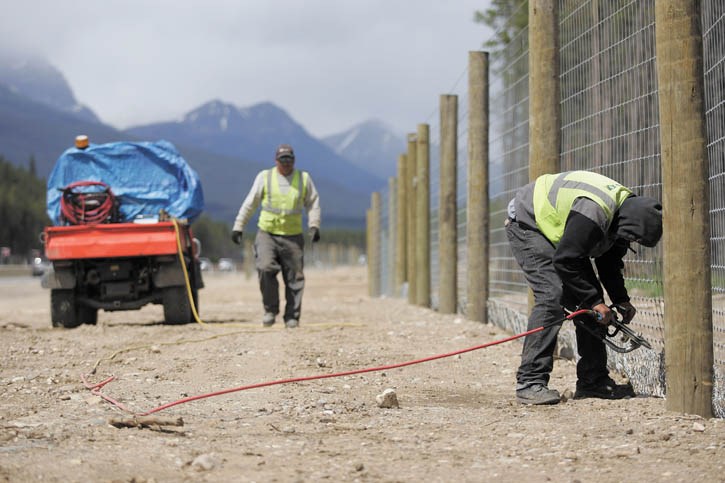The Bow Valley is proving to be a mortality sink for grizzly bears that continue to die at the hands of humans at an alarming rate.
The death of a five-and-a-half year-old female grizzly bear on the Trans-Canada Highway last week has pushed the human caused mortality rate past Parks Canada’s own acceptable threshold for sustaining the population.
The bear, known as bear No. 108, survived the initial impact on July 11 near Mannix Pit, but was found by resource conservation officers about 200 metres off the highway on July 13. She died from internal injuries.
This is the third grizzly bear to die of human causes so far this year. In May, a large male grizzly was killed on the highway and a female grizzly died on the train tracks, orphaning two yearling cubs.
“We are over the threshold. The reality is the mortality situation in the Bow Valley is extremely concerning,” said Steve Michel, human-wildlife conflict specialist for Banff.
“We are very concerned that accidental grizzly bear mortality rates within the Bow Valley remain high, particularly for female bears.”
Banff’s management plan identifies a target of maintaining annual known, human-caused mortality of independent female grizzlies below 1.2 per cent of the park population, based on a four year running average.
There are an estimated 60 grizzly bears in Banff National Park.
The threshold is based on several factors, including but not limited to the fact that research suggests the survival of reproductive females is the key factor affecting the population.
The low reproductive rates of females in Banff National Park also mean Parks Canada takes a conservative approach to managing the grizzly bear population.
In this case, park resource conservation officials were hopeful bear No. 108 would live to become a breeding female.
Michel said she had been seen with male bears during the breeding season.
“We had a lot of optimism and hoped she was an animal that was going to mature into an adult female and be a reproductive age female and start producing cubs,” he said.
“We know she was breeding this spring. We were quite optimistic she would potentially emerge next spring with cubs. It’s a huge loss to the ecosystem and to staff who were trying to keep her alive.”
Bear No. 108 has been on the highway several times in the last month, getting beneath a section of fence that is still under construction as part of the twinning project between Castle Junction and Lake Louise.
The new fence is not yet anchored to the ground so the bear was known to lift the bottom and crawl underneath on several occasions to get to dandelions on the highway right-of-way.
The Canadian Parks and Wilderness Society (CPAWS) is calling on Parks to make completion of the fence an urgent priority, and to reduce the speed limit to 70 km/h in areas where the fence is not finished.
“If the fence isn’t keeping animals off the highway, it’s simply not dong its job and this needs to be remedied immediately,” said Sarah Elmeligi, senior conservation planner for CPAWS.
Michel said bear No. 108’s death is extremely disappointing.
“We’ve put a huge amount of time and resources into keeping her alive on the landscape. A young female like this is of critical importance to the ecosystem,” he said.
Michel said she was a bear that was certainly comfortable around people and infrastructure. She was the daughter of bear No. 64, who emerged from the den this spring with three new cubs.
He said she never got into serious trouble, but got used to navigating the Bow Valley during the time she was traveling with her mother.
“That means she had to navigate the Trans-Canada Highway, the Bow Valley Parkway and Canadian Pacific Railway,” he said. “And all of these are high sources of mortality for bears.”
Michel said Parks Canada continues to work towards reducing mortality through a variety of means.
That includes, he said, construction of wildlife crossing structures in conjunction with completing the wildlife exclusion fencing along the highway, as well as the Canadian Pacific-Parks Canada action plan to reduce railway mortality
“When the fence is complete in that area, it will the best fence that we have within Banff National Park, but at this point, it’s just not complete.”
Grizzly No. 108’s female sibling, known as bear No. 109, was killed by a train on the Canadian Pacific Railway in May 2010 near Five Mile Bridge, west of the Banff townsite.




